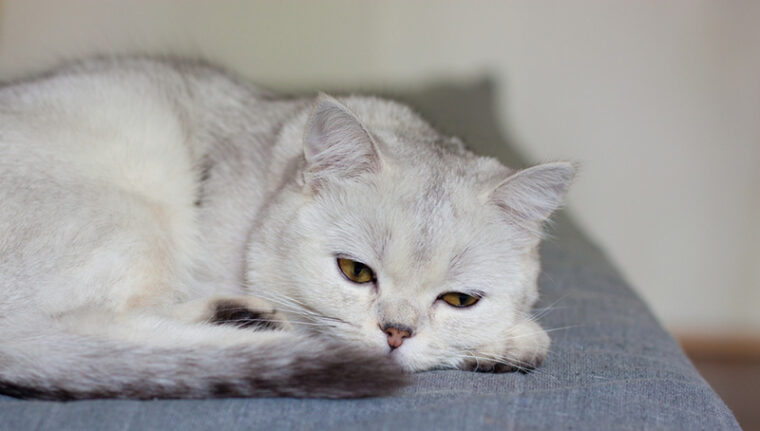
Click to Skip Ahead
Most of the time, when a cat has cancer, the question of what to feed them is not as important as how to feed them as well as how to get them to eat enough in the first place.
Getting a cat to eat enough is the biggest and most common challenge. Many cats lose their appetite because they do not feel well, are in pain, are stressed, or sometimes their medications and treatments have side effects.
Plus, even if we mean well, many cats do not like it when their diets change, and they can starve themselves if we are not careful. So, if you do change your cat’s diet when they are diagnosed with cancer, proceed with caution but be persistent with encouraging them to eat.
 A Healthy Cat Diet
A Healthy Cat Diet
Cats need diets particularly high in fat and protein, and they need certain proteins that other animals (dogs and humans) do not need in their diet, such as taurine (a type of amino acid). Therefore, it’s important cats are not on human or dog diets and are always given a cat-specific food.
A healthy cat can be fed once or twice a day, but a cat with cancer may need to be fed more frequently. For example, 3–6 small meals can not only encourage a cat to eat more but also be easier to digest.
Sometimes, cats are grazers. Even when they are healthy, they eat small bits throughout the day. Most of the time, this is not a problem as long as they do not have a condition contraindicated with this feeding style, like diabetes or obesity.
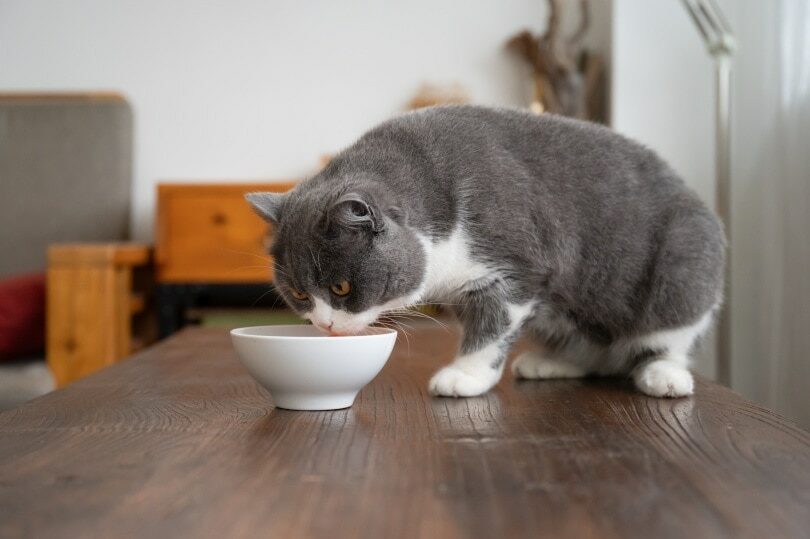
The 5 Nutritional Steps to Caring for a Cat with Cancer
1. Encouraging a Cat to Eat
Small changes at home can help encourage a cat to eat. The first thing to consider is how to reduce stress and help a cat feel more comfortable eating.
2. Positive Reinforcement
If your cat enjoys human company, you can feed them in the same room as the family. On the other hand, if they like their privacy try creating a secure and quiet place for them to eat alone.
Sometimes, particularly if your cat is very friendly, you can encourage them to eat by praising and petting them when they eat.
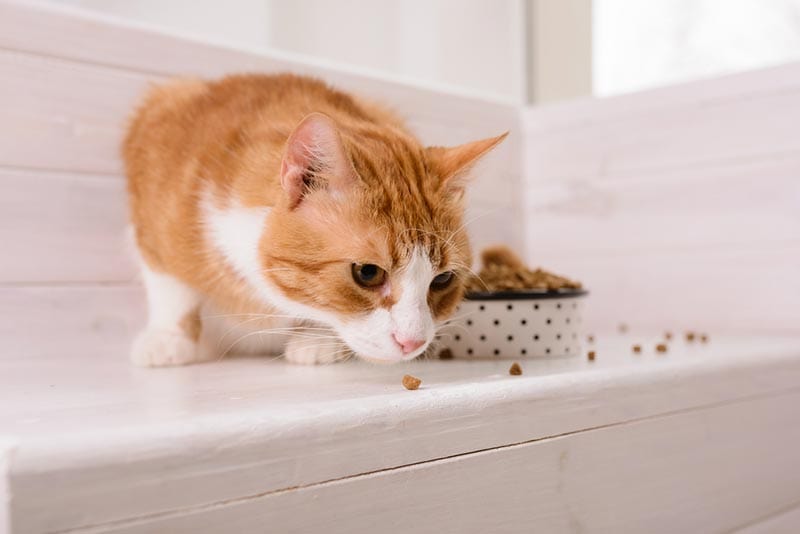
3. Hand Feeding
Hand feeding can also help encourage a cat to eat more. But be careful you are not force-feeding them. Cats can develop an aversion to food if they eat a certain food while they feel sick, and they may never eat it again.
4. Increasing Water Intake
Adding water to cat food is almost always a good thing to do. It can often encourage the cat to eat more. And it increases their water intake, which is also almost always a good thing. Think of it as making a cat-soup or a cat-gruel.
5. Selecting a Diet
If your cat is not eating, or losing weight, make sure every bite counts by offering high-calorie foods, comparing labels, and selecting the ones with more calories.
There are also many commercial diets that are specifically designed for this. They are usually called critical care diets and are so high in calories, proteins, and fats that they are not good to feed to healthy cats. But they are scientifically balanced for the special nutritional needs of cats, which can be hard to do with homemade diets.
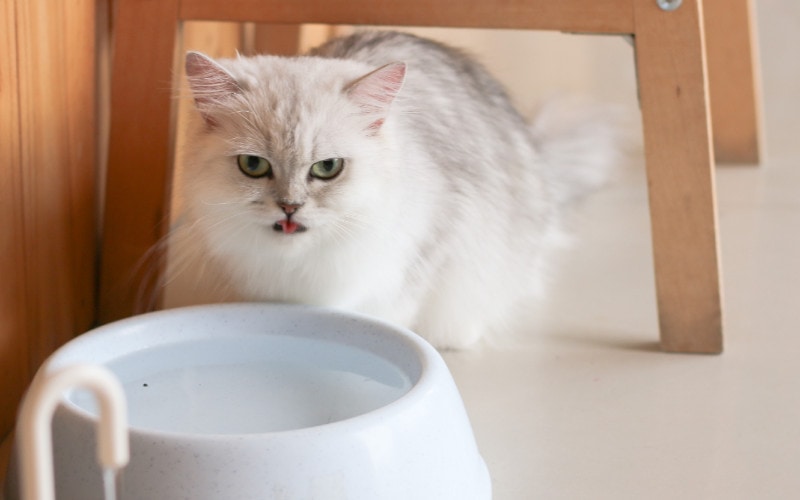
The 4 Types of Cancers in Cats and Their Dietary Needs
1. Kidney Cancer
If a cat has kidney cancer, a diet low in protein and phosphate may help their kidneys function longer. However, for it to work, they need to exclusively eat the special diet, which means no treats, no human food, no stealing other cat’s food, and no hunting. This can be very difficult, if not impossible, to achieve.
Especially since many cats do not like it when their food changes, cats with kidney disease also are often nauseated and painful and not likely to eat anything. So, remember, be persistent.
2. Pancreatic Cancer
The pancreas generates molecules that are actively crucial for metabolism, so depending on what part of the pancreas has cancer can significantly alter the nutritional and survival rates.
It is a complex organ. Cancer in the pancreas may need a low-fat diet for dogs; however, there is little evidence that this is true in cats. The pancreas is also responsible for generating insulin, which regulates glucose in the body. Therefore, it is vitally important to discuss diet with your veterinarian if your cat has cancer in its pancreas to get the specific diet just right.

3. Liver Cancer
Cancer in the liver rarely needs a special diet, and the goal is usually to ensure appropriate weight maintenance, making sure they eat enough and do not lose weight.
4. Gastrointestinal Cancer
Cancer in the gastrointestinal tract may need special, individualized attention. Particularly since the GI tract is responsible for digestion, certain nutrients may simulate disease if there are intolerances or allergies.
Protein is important but many proteins are allergens. And, while many human diets recommend restricting fats, cats need more fat than humans; plus, fat is often an important way of increasing calories.
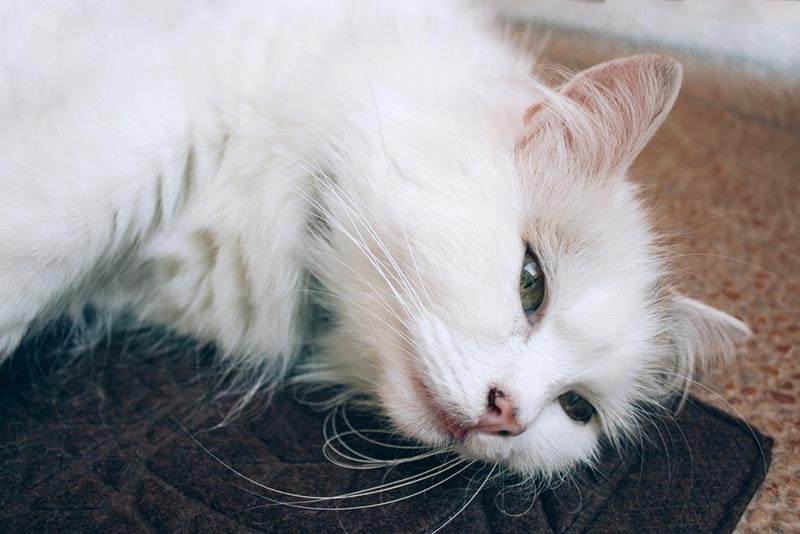
Cancer’s Effect on Digestion
Cancer can also slow digestion and cause food to move along the GI tract slower, so offer food that is easy to digest and moves through quickly.
It is also good to encourage gentle movement. Even the gentlest walk across the living room can help a cat’s digestive tract move along.
 Conclusion
Conclusion
Preventing weight loss and keeping an ideal weight is the main goal when feeding a cat with cancer. Find a cat-specific diet they want to eat and be persistent in encouraging them to eat.
If your cat is not eating despite all your best efforts, talk to your vet, they may be able to prescribe medication that can help reduce pain, anxiety, and nausea. And remember, sometimes eating anything is better than nothing.
Featured Image Credit: stokerolga, Shutterstock

 A Healthy Cat Diet
A Healthy Cat Diet



